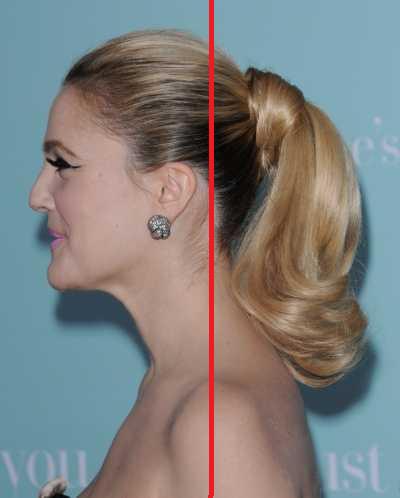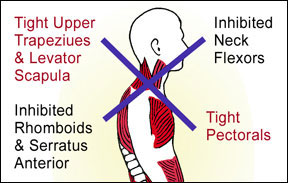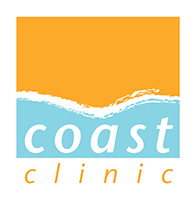First Impressions
Posture it is part of the first impression that you make to the outside world and it says so much about how you feel about yourself. Poor posture is highly prevalent in our society. One of the most common incorrect postures you will see if you start looking at people or possibly, if you look in the mirror, is this, Upper Cross Syndrome. This blog is set out to not only inform you of what is happening with your body musculature but also to help you improve your posture (upper cross syndrome) with easy to watch, self-help exercise videos (1).

Now this well recognised woman is a perfect example of someone who carries her head before her body, also known as anterior head carriage. Many people walk around with this posture. Our social media, smart phone and computer reliant lives are definitely promoting this posture but so are our busy lifesyles. It’s as if we are already somewhere else or trying to be, head first and never actually present, the here and now.
Poor Posture
Ideally, a person’s ear should be in line with their shoulder and their shoulder should be in line with their hip and the hip line just a little forward from the ankle. For every inch the head is forward from its natural position, it is twice as heavy and heads are really heavy to start with. In the photo above, you can see there is a good two inches of anterior head carriage. That’s one heavy head. This results in muscle imbalances as they strain to keep the head in position. In this posture, because the head is anterior, it naturally tilts forward resulting in the small muscles at the base of the neck, the sub-occipital muscles, to tighten. This enables the suboccipital muscles to tilt the head up, so that the person can see around them.

This is a further photo of the same woman showing another posture that commonly goes with anterior head carriage. Here, unfortunately, she looks rather glamorous but the reality is her shoulders are forward and her scapula (shoulder blades) are winging (sticking out). This is due to hypertonic (too strong) muscles of the chest and hypotonic (weak) muscles of the back.
Janda’s Upper Cross Syndrome
This posture was first named by Dr. Vladimir Janda, a Czech neurologist and physiatrist, as Upper Cross Syndrome. Janda’s approach is based on the function of the body rather than just the structure. Through observation and electromyography tests he concluded it was  not just the strength of the muscle that was important but the sequence of the firing of muscle contraction, therefore an interdependence of the musculoskeletal and central nervous system, termed the ‘sensorimotor’ system, or lack of it, that was of great relevance and could predict injury patterns of a patient. Changes within one part of the system are reflected by compensations elsewhere within the system as the body tries to reach equilibrium (you’ve probably heard me say this one way or another, many times as I work on you). Janda noted that these changes in muscular tone create muscle imbalance, which leads to movement dysfunction that can result in pain elsewhere in the body and possible degeneration (wear and tear) of joints. Therefore, it is important to determine the cause of pain rather than just treat where it hurts.
not just the strength of the muscle that was important but the sequence of the firing of muscle contraction, therefore an interdependence of the musculoskeletal and central nervous system, termed the ‘sensorimotor’ system, or lack of it, that was of great relevance and could predict injury patterns of a patient. Changes within one part of the system are reflected by compensations elsewhere within the system as the body tries to reach equilibrium (you’ve probably heard me say this one way or another, many times as I work on you). Janda noted that these changes in muscular tone create muscle imbalance, which leads to movement dysfunction that can result in pain elsewhere in the body and possible degeneration (wear and tear) of joints. Therefore, it is important to determine the cause of pain rather than just treat where it hurts.
I don’t want to bore you by getting into too much detail so hang in there, this is worth knowing.
The human body can reasonably be divided into two muscle type groups, Tonic and Phasic. The Tonic muscle group is made up of flexor muscles and this group is phylogenetically older and more dominant than the Phasic muscles. The Phasic group are extensor muscles that emerge shortly after birth and activate to resist the forces of gravity. Due to the dominance of the flexor muscles, they tend to tighten becoming shorter, whereas the extensor muscles are flaccid and therefore are weaker and have less tone. This can be observed when there is neurological damage e.g. a person with cerebral palsy, the more dominant flexor muscles go into spasm producing a spastic posture.
Tonic and Phasic Muscles
TONIC MUSCLES PHASIC MUSCLES
- Upper limb Upper limb extensors
- Sternocleidomastoid Deep neck flexors
- Scalenes Rhomboids
- Levator scapular Serratus anterior
- Upper trapezius Lower trapezius
- Pectoralis major
Now what this all really means is – many people have incorrect muscle patterns resulting in a combination of tight and weak muscles and commonly, in the upper body, the pattern of imbalance looks like this:

Now you can see what I’m talking about, can’t you? I’m sure if you start observing people around you, you will realise many people have this posture. So what can be done about it?
Stretches and Exercises to Improve Your Posture
Well, Janda determined that a tight, shortened muscle can inhibit its opposing muscle e.g. a tight pectoral muscles will result in a weak serratus anterior muscle. The good news; Janda also determined that many times just stretching the tight muscle allows the opposing muscle to function better. Therefore, one of the first steps to counter Upper Cross Syndrome is to stretch the pectoral muscles.
Pectoralis stretch – In this video, Rich is demonstrating just that! You can do a Pec stretch in the way Rich is demonstrating by placing your arm against a door frame or you could place your hand on the wall and do it that way. Stretch the pecs at 90 degrees to stretch the shorter, upper pectoralis fibres and then move the arm to 120 degrees to stretch the longer pectoralis mucle fibres.
Further chest opening videos that will stretch the pectoralis muscles.
Now how to strengthen the weakened muscles
Deep neck flexors – by doing this exercise, you are also stretching the tight sub-occipital muscles.
Wall Angel – stand with your back against a wall and your feet a shoes length away from the skirting board. Keep your spine, including your neck, against the wall. To do this you need to keep the ribcage/diaphragm down by activating the abdominal muscles and not let the ribcage lift as you put your arms into position. Many people can’t get into position to start with. Don’t give up, just keep doing it and you will improve. Also I suggest you start with the video below, Holding a platter, first if you can’t get into the correct position at first. Here is Elke demonstrating the exercise.
Holding a Platter 1 – for those that find the Wall Angel too difficult at first, try this is exercise and then progress to the one below. You will know if you should start with this as you will will find you can’t get into the Wall Angel position to do the exercise correctly.
Holding a Platter 2 – once you can do Holding a Platter 1 continue to this exercise. Then, when you can do this exercise well, progress to the Wall Angel.
Prone Angel – here Rich is demonstrating another way of doing the Wall Angel for those people that find it hard to get into the Wall Angel position (2) ((but don’t give up on Wall Angel)).
The Y exercise – it is important with this exercise not to lift your shoulders to your ears as you stretch out your arms. Don’t activate the Upper Trapezius muscles; keep those shoulders down. Here is Elke showing us how to do it.
Serratus Anterior – this is a difficult exercise to do correctly but it’s really important as the weakness of this muscle is usually the foundation of most shoulder problems. The biggest mistake people make is they just move their shoulder blades together and apart but the exercise is about moving the blades down and to the side (also difficult to explain). Here it is demonstrated really well by Rich.
New Addition – this is the latest video addition for an alternate way of exercising the Serratus Anterior demonstrated by Ginny. I think you may find it easier to understand, feel and do.
Brugger Exercise – this is a really clever exercise which can be done either sitting or standing (please follow this link for the whole story)
Find a Practitioner to work with you
Now obviously along with these exercises, body treatments such as Chiropractic, Osteopathy, Sports Therapy, Acupuncture, Massage or your treatment of choice can be used to really activate the sensorimotor system. Treatment and exercise, including Pilates, Yoga or Qi Gong, are the perfect combination to facilitate correct sensorimotor function and to improve your posture.
So that’s the top half of the body facilitated. How about the bottom half? Here’s the link to Lower Cross Syndrome.
Written by Anne French
1. Effects of an 8-week selective corrective exercises program on electromyography activity of scapular and neck muscles in persons with upper crossed syndrome: Randomized controlled trial https://pubmed.ncbi.nlm.nih.gov/30928841/
2. The effect of middle and lower trapezius strength exercises and levator scapulae and upper trapezius stretching exercises in upper crossed syndrome. https://pubmed.ncbi.nlm.nih.gov/27313388/
